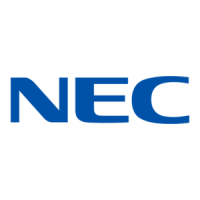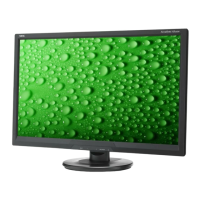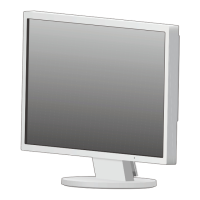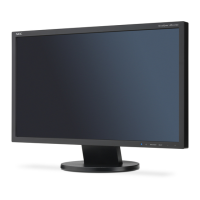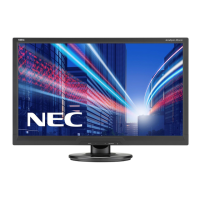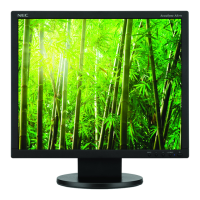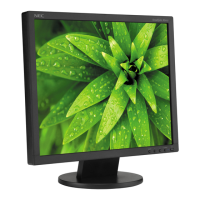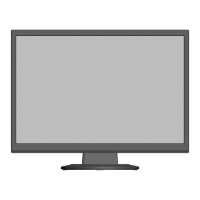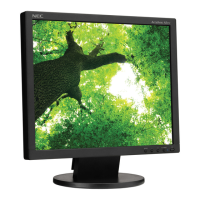English-13
English
Specifications
Monitor Specifications AccuSync AS203WMi Monitor Notes
LCD Module Diagonal:
Viewable Image Size:
Native Resolution (Pixel Count):
49.41 cm/19.5 inches
49.41 cm/19.5 inches
1600 x 900
Active matrix; thin film transistor (TFT) liquid crystal
display (LCD); 0.271(H) x 0.263(V) mm dot pitch;
250 cd/m
2
white luminance; 1000:1 contrast ratio
(
typical
),
(25000:1 Contrast ratio, DV MODE ON)
Input Signal
DVI: DVI-D 24pin: Digital RGB DVI (HDCP)
VGA: 15pin Mini D-sub: Analog RGB
Sync
0.7 Vp-p/75 ohm
Separate sync.TTL level Positive/Negative
Display Colors 16,777,216 Depends on display card used.
Synchronization Range Horizontal:
Vertical:
31.5 kHz to 81.1 kHz
56 Hz to 76 Hz
Automatically
Automatically
Viewing Angle Left/Right:
Up/Down:
±89° (CR > 10)
±89° (CR > 10)
Resolutions Supported (Some systems may
not support all modes listed).
720 x 400*
1
VGA text
640 x 480*
1
at 60 Hz to 75 Hz
800 x 600*
1
at 56 Hz to 75 Hz
832 x 624*
1
at 75 Hz
1024 x 768*
1
at 60 Hz to 75 Hz
1152 x 870*
1
at 75 Hz
1440 x 900*
1
at 60 Hz
1600 x 900 at 60 Hz........................................... NEC DISPLAY SOLUTIONS cites recommended
resolution for optimal display performance.
Active Display Area Horizontal:
Verttical:
433.9 mm/17.1 inches
236.3 mm/9.3 inches
Audio Audio Input:
Headphone Output:
Stereo Mini jack
Stereo Mini jack
Speakers Practical Audio Output: 1.0 W + 1.0 W
Power Supply 100 - 240 V ~ 50/60 Hz
Current Rating 0.35 - 0.20 A
Dimensions Landscape: 466.0 mm (W) x 335.1 mm (H) x 205.1 mm (D)
18.3 inches (W) x 13.2 inches (H) x 8.1 inches (D)
Weight 3.4 kg (7.5 lbs)
Environmental Considerations
Operating Temperature:
Humidity:
Altitude:
Storage Temperature:
Humidity:
Altitude:
5°C to 35°C/41°F to 95°F
20% to 80%
0 to 6,562 Feet/0 to 2,000 m
-10°C to 60°C/14°F to 140°F
10% to 85%
0 to 40,000 Feet/0 to 12,192 m
*1 Interpolated Resolutions: When resolutions are shown that are lower than the pixel count of the LCD module, text may appear different. This is normal and
necessary for all current flat panel technologies when displaying non-native resolutions full screen. In flat panel technologies, each dot on the screen is actually one
pixel, so to expand resolutions to full screen, an interpolation of the resolution must be done.
NOTE: Technical specifications are subject to change without notice.
